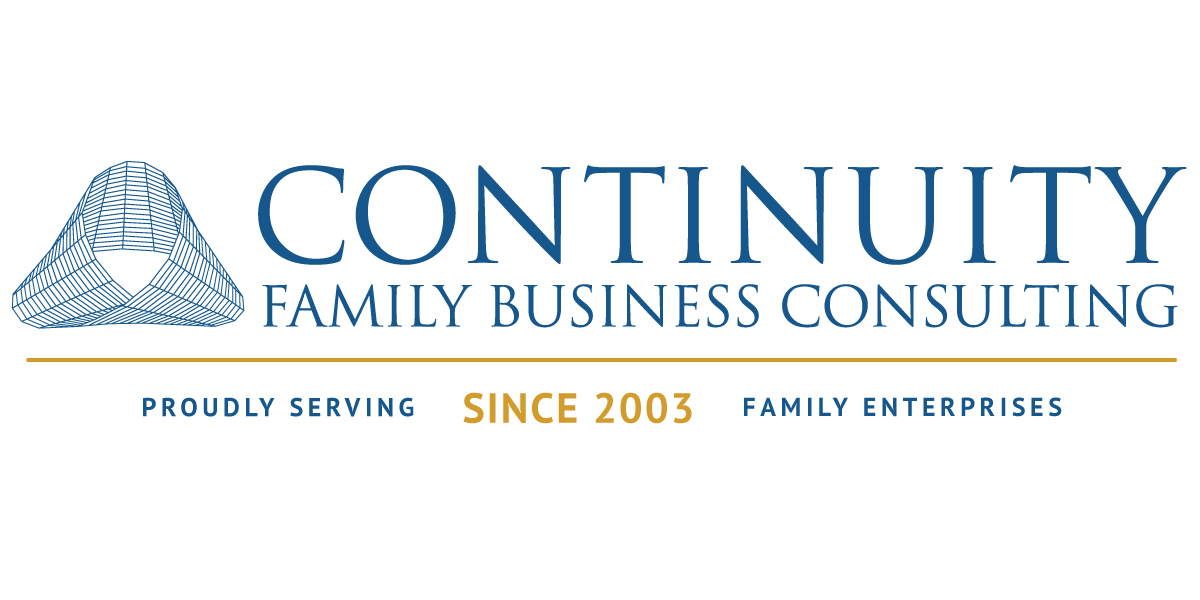A Succession Planning Guide for Family-Owned Businesses
Byline: Doug Baumoel
Estimated read time: ~13 minutes
Transitioning a company to the next generation of leaders is a complex process that can easily falter if there’s not a strong succession plan in place. When we talk about succession, we’re focused on BOTH management and ownership; these two are tightly intertwined and must be considered together. If either management or ownership succession fails, uncertainty and misplaced expectation can have major repercussions that can lead families into conflict.
Additionally, encouraging family members to join the business as an employee without considering ownership succession will likely raise false expectations of ownership, issues of fairness, and give mixed messages to employees and partners.
Strategic Elements of a Succession Plan
The best succession plan is one that addresses the unique needs and dynamics of both the family and the enterprise. We cannot stress this enough. There is no cookie cutter succession planning template because every family and situation is different and requires individual consideration.
That said, every family business should undertake the following groundwork to ensure a smoother generational transition, including:
- Communicating ownership intentions
- Establishing exit plans
- Nurturing career paths
- Addressing potential nepotism, reverse nepotism, and entitlement
- Building accountability and review systems
- Articulating compensation strategy
- Beginning the leadership transition
- Engaging succession planning advisors
For the rest of this succession planning guide, we’ll thoroughly explore each of these elements.
1. Communicate Ownership Intentions
Being proactive about ownership planning is crucial. Having an honest conversation with your family about your intentions for business ownership can avoid unintended consequences. For example, if you’re considering hiring your children to work for the company, but there is also a possibility that you might sell the business within 10 years, let them know that. Plan for that contingency together so there are no unspoken assumptions.
If you’re planning to have siblings share equal ownership regardless of employment in the family business, be upfront about that early on. Conversely, if working in the family business is seen as a path to ownership or proportionately more ownership and maybe even control, it is important to make that clear. Not engaging in these kinds of discussions will foster false assumptions that can damage family relationships and could eventually compromise leadership transition planning.
2. Establish Exit Plans Beforehand
Things change and family members may either choose to leave the company, or may be encouraged to take a different path. Having policies designed around exit planning can protect not only the business but the family as well.
For example, be upfront with family employees that if they’re underperforming, they’ll be reviewed independently, and poor performance will lead to consequences like being asked to step down. Or, if a family member chooses to leave for other reasons, ensure there’s a plan in place that will allow them to do so without causing turmoil in the business ranks.

Having an exit plan for family employees before they begin working can avoid conflict and disagreements when and if a family member decides to leave or is asked to leave. Exit plans might involve a severance payment package, commitment for retraining/education and job placement services. Having a robust strategic HR department and independent advisors or directors might be useful to help engage family members in these difficult, but very important, discussions.
But leaving a family business is not only a financial issue. For some, it can also require the very difficult challenge of redefining one’s professional and personal identity. This is often why exits from a family business are so fraught. When a stakeholder’s identity is closely tied to their role in a business that they grew up with, leaving can be traumatic.
In addition to exit plans for management, liquidity plans for ownership should also be developed. Will an exiting family member who has earned ownership in some form be asked to relinquish that ownership? Shareholders need to be aligned in their vision for the company and be able to agree on basic strategic choices facing the company. When this alignment cannot happen, having liquidity options and a robust buy-sell agreement makes for good business partnerships among remaining shareholders.
3. Nurture Potential Career Paths
Giving rising generation leaders every chance to succeed serves the interests of all stakeholders, yet the risk of failure can be devastating to the individual and entire family business system.
Being able to effectively leverage the deep commitment and drive of well selected and placed family employees can offer an enormous advantage to the business, the individual, and the family. That’s why establishing a good employment policy and reviewing practices are crucial for successful career pathing of family employees and protection of the enterprise.
Set expectations from the beginning
Having clear expectations and long-term plans for family members’ careers before they join is crucial. There are only so many roles that a company can offer to family members and often the eldest family member may have a head-start simply because they were able to show up first.
This may put the next generation’s older stakeholders in a better position for success in the company moving forward and may cause issues of perceived unfairness with younger siblings who feel they haven’t had a chance at leadership. Have open conversations among all family members about their potential roles and direction at the company so there are no surprises.
Give them valuable professional experience, even if they choose a different employment path
Choosing NOT to work at the family business is an equally important consideration. Training rising gens for roles as engaged owners and directors can be valuable paths for the then, the family and the business. This also allows individuals to pursue their own professional dreams outside the family business. Remember, living someone else’s dream can be a nightmare. Having paths for involvement in the family business outside traditional employment in family business operations gives families a broader pallet with which to engage for success.
Be aware of many of the assumptions that children often grow up with—that they are expected to work at the family business; that not choosing the family business for their livelihood would be disloyal; or, that they have an obligation to ‘save’ the family business in some manner.

Dinner table talk is where many next gens learn about the business. When they hear their parents discussing problems at the business, they may either be turned off to a career at the business, may develop concern about the family’s financial security, or may feel obligated to ‘save’ their family by joining a business that might not actually suit them. In addition, when dinner conversation is all about the business (good or bad), children may grow feeling that their only value, their only way to get noticed, is to be a part of that conversation.
Other policies to promote successful family employment include:
- Acknowledging and adhering to reasonable rules, such as requiring that education and experience requirements be met for desired roles (per job description)
- Providing market-based compensation for positions
- Being aware of potential growth opportunities for well-performing family employees in order to avoid career dead-ends
Remember that joining a family business at an executive level can be, or feel like, a one-way ticket. Leaving a managerial position at one’s family business will always beg the question: “If you couldn’t make it at your own family business, why should we hire you?”. Many family businesses are in niche industries where rising family executives are quite visible to competitors. Leaving that role might demand leaving the industry and that could be a major professional setback for a family member.
4. Address Nepotism, Reverse Nepotism, and Entitlement
Providing effective and accurate feedback for family employees can be a pitfall for many family businesses. Some family businesses avoid reviewing family members because it can be too difficult and uncomfortable. Others treat the family member as any other employee and put them through the same review process as non-family employees without considering either the structural difficulties that compromise this effort or the additional review criteria to which family members should be subjected.

Family members are standard bearers in the organization and must exemplify the ethical values the family has chosen for its enterprise. Therefore, they should be reviewed more robustly than other employees to ensure they’re not straying from the path to success and the family’s articulated behavioral expectation and values. They also need to understand they can’t engage in office gossip about leadership like other employees can and need to be careful about socialization outside of the workplace. In short, they carry the responsibility of representing the family’s values and reputation at the company in addition to their workplace duties.
While it may seem fairest to say you’re going to treat your family member exactly like other employees, the reality is that they are not like other employees. That’s why we believe that employing family members needs to be done in a thoughtful manner with a purposeful process and structure in place to help them succeed, or exit, gracefully. At the heart of this is providing them accurate, timely feedback on their performance and behavior.
5. Build Accountability and Review Systems
When family businesses transition from sole proprietorships to multiple stakeholder organizations, developing appropriate corporate and family governance can be crucial for success.
Multigenerational family businesses often have a diverse set of owners━some working at the company and some not. Governance is where owners’ voices can be heard or represented. It is an essential component of accountability and oversight that can help families avoid conflict as their enterprise succeeds through the generations.
When family businesses become larger, and as families grow, ownership may extend to multiple branches of a family as well as generations. In addition, the voices of future owners need a vehicle for development and expression. In these families, developing formal family governance might provide enormous benefit. Family councils and ownership councils can be forums for aligning family vision and expectations for their enterprise while providing a safe conduit of communication to the corporate board.
In addition, and as noted above, since family employees are standard-bearers of family values and are more likely being developed for leadership roles which might also include ownership, they should be held to different performance standards. We recommend an employee review process that transcends what would be given to a typically non-family employee. Such a review process would include checking for entitlement behaviors, conflict management skills, ownership and governance knowledge and other characteristics that go beyond job performance.
6. Articulating Compensation Strategy
As younger family members join the enterprise; it is crucial that compensation expectations be made clear. While a good (i.e., not ‘best’) practice is to compensate family members according to industry standards, that might not be attractive enough to bring in the next gen, whose education and career choices might make it difficult for them to see an equitable career path at the family business.

Some families choose to offer a salary competitive to what their young family member would get outside the family business━in a different industry or much larger company. While this might get the family member in the door, it can also serve to compromise the company’s overall compensation structure. It is important to remember that compensation is more than salary. Compensation plans can be developed based on actual or phantom stock and other LTIP plans, bonuses, and perks.
We believe that the right family member can be the best possible employee so being able to attract them to the company is essential. Making an investment in family leadership is often the best bet. Finding balance between compensation standards and incentives to attract these leaders is difficult and can be helped by finding the right advisors.
7. How to Begin the Leadership Transition
Those approaching the succession process need to understand that the magnitude and transformative challenge of a senior leader’s transition out of their leadership role goes way beyond the trite advice that advisors often give that they “need to retire to something, not from something.” Many senior leaders fear this transition because they associate it with loss, aging, or death—rather than seeing in it the potential for completion, rebirth/renewal, or transcendence.

It is only by transitioning out of the active leadership role that an individual leader can achieve what we call “transcendent leadership,” gaining perspective on their accomplishments and creating meaning that goes beyond their work, their lifetime, and themselves.
Of course, any transition plan requires that the nuts and bolts of transition are in place—a successor is named, trained and empowered, a transition plan is funded, and transition strategies are well defined and articulated. But once all the moving parts are in place, it boils down to the family business leader having the courage to step aside and support the family and it’s enterprise without title or authority, but with their wisdom and character alone. They need to transition from being relied on for their ‘work’ to being valued for their ‘wisdom’.
How to Start Transcending the Work Role
Just as new leaders can benefit from understanding various leadership archetypes (e.g. servant leader, participative leader, etc.), transitioning leaders can benefit from considering departure-style archetypes.
Jeffrey Sonnenfeld’s book, The Hero’s Farewell, describes four main archetypes for the departing leader:
- Monarch—Typically deposed by revolution or replaced due to death or illness. They are not only driven by title and position but are also mission driven and believe their mission never ends—it keeps expanding.
- General—Leaves not by own choosing, but by decisions of others. Cannot live without the war. Looks for every opportunity to re-engage. Their mission is to lead and, by definition, leadership never ends.
- Ambassador—leaves gracefully, happy to continue providing mentorship to others or to help from an advisory position. Position is more central to them than mission, and they seek new challenges that maintain their position.
- Governor—Leaves gracefully, but with some mixed feelings when they have either accomplished or advanced their mission sufficiently or realized that an alternative leader is needed. Governors tend to move into other areas of interest and leave the organization behind. They seek additional challenges that offer them opportunities to work and accomplish again.
Most leaders are a combination of these archetypes. We recommend that departing leaders explore the characteristics they most connect with and identify how those characteristics can enhance or present challenges to the family business’ transition plan. What future options does the outgoing leader need to consider in order to manage the fear and uncertainty of transition?
When leaders understand their choices and are clear on how they want to depart ─ and when they understand the value to their well-being for completing this part of their journey and handing off power ─ they can begin integrating their accomplishments into a more fulfilling life story. And, yes, they can also begin to find additional fulfillment in activities beyond ‘work’.
8. When to Engage Succession Planning Consultants
It is important to first distinguish consulting from coaching━at least in our view. Consulting is, at its core, problem solving. Clients come to a consultant with a set of problems that need solving and rely on the consultant’s knowledge and experience to help them craft solutions. These problems can be structural or personal. Structural problems might include the nuts and bolts of crafting a succession plan or other transition. Personal problems would involve how those plans would get implemented in a way that keeps important continuing relationships intact.

We view coaching as very different, and we are aware that a). other professionals might not agree with our definition and b) there is a large gray area separating consulting and coaching. We see coaching as a very valuable process that supports change. Consulting may be useful in defining change, but coaching can ensure that those changes are implemented successfully and tweaked so they can accommodate the dynamics that inevitably arise during change.
To summarize, a consultant generally has a shorter term of engagement than a coach. For example, a succession plan may take a few months to develop with the guidance of a consultant, but take years to implement with the support of a coach or coaches.
At Continuity Family Business Consulting, our advisors include both experienced consultants and skilled coaches. We develop and guide families through tailored, comprehensive succession strategies that consider all involved. We use specialized approaches to address sensitive issues and to help ensure the likelihood of success for the family and its enterprise.
About Us
Continuity Family Business Consulting is a leading advisory firm for enterprising families. Using a full suite of service capabilities, we help families prevent and manage the single greatest threat to family and business continuity: conflict. It is through this lens that we advise our clients and build customized strategies for succession planning, corporate governance, family governance, and more. We help families improve decision making, maximize potential and achieve continuity. To inquire, visit https://continuityfbc.com/contact-us or call (617) 500-3110.

